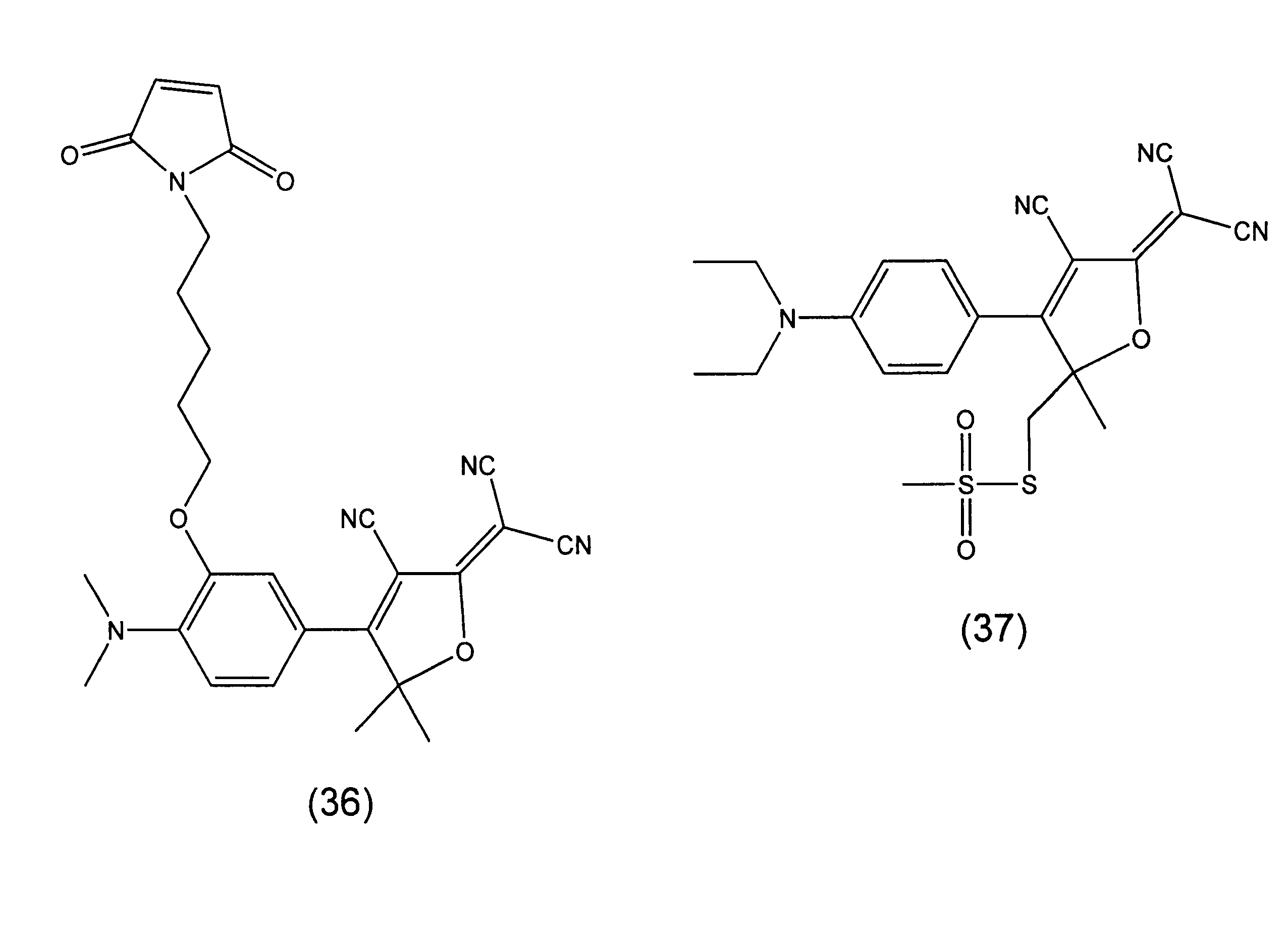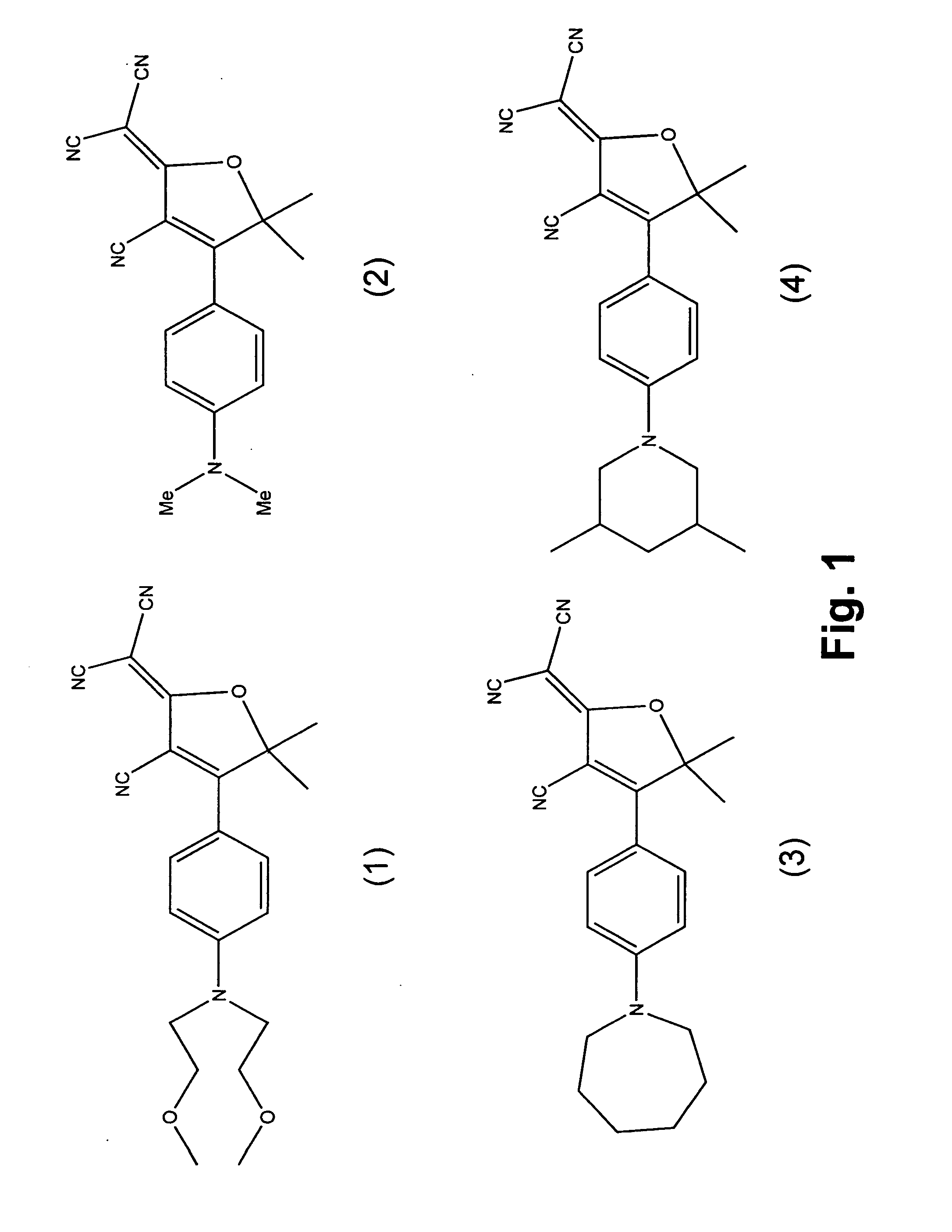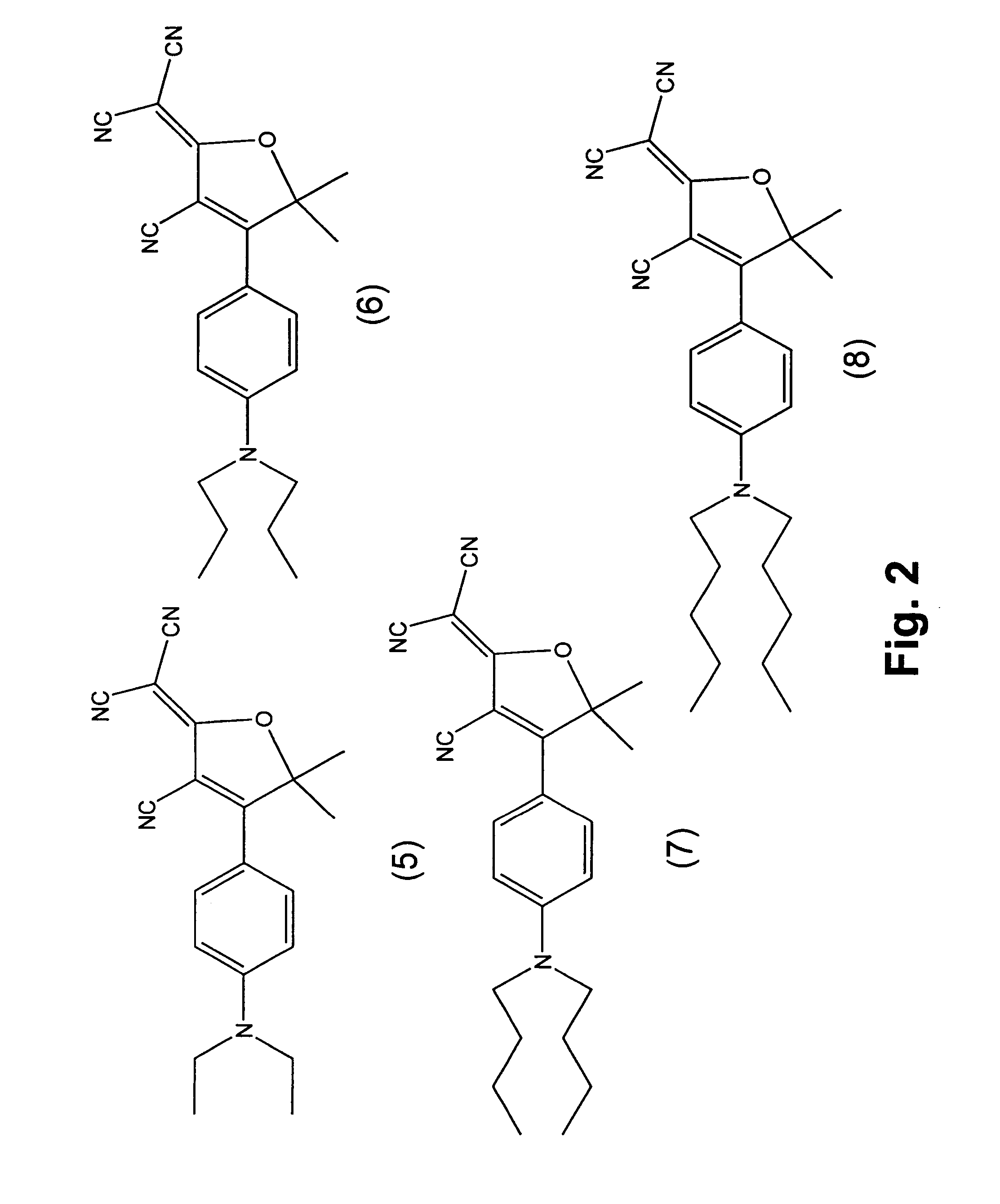Fluorophore compounds and their use in biological systems
- Summary
- Abstract
- Description
- Claims
- Application Information
AI Technical Summary
Benefits of technology
Problems solved by technology
Method used
Image
Examples
example 1
Preparation of 2-methyl-2-trimethylsilyloxypropionitrile 5
[0060] A mixture of acetone cyanohydrin (160 ml, 1.26 mol) and pyridine (90 ml, 1.24 mol) was stirred in an ice bath under the protection of dry nitrogen. Neat TMSCl (100 ml, 1.1 mol) was then slowly added via a dropping funnel at 0° C. After the addition, a large quantity of a white solid was produced and the reaction mixture was kept stirring at room temperature for 8 hours more. The reaction mixture was slowly poured into a vigorously stirred mixture of 200 ml saturated sodium bicarbonate solution and 200 ml petroleum ether. After stirring for one hour the organic layer was isolated in a separatory funnel, washed several times with water and dried over magnesium sulfate. After filtration, the petroleum ether was removed by distillation and the residue was purified by vacuum distillation at 75-100 kPa. Material boiling at 110° C. was collected to give 160 g (92% yield) of clear liquid: 1H NMR (300 MHz, CDCl3) δ 0.20 (s, 9 ...
example 2
Preparation of 1-(4-fluorophenyl)-2-hydroxy-2-methylpropan-1-one 7
[0061] Under the protection of nitrogen, a solution of 4-bromofluorobenzene (59 g, 0.34 mol) in dry THF (60 ml) was added dropwise at room temperature to a stirred mixture of magnesium turnings (9.84 g, 0.405 mol) in 20 ml of dry THF containing four drops of 1,2-dibromoethane. An ice water bath was occasionally used to moderate the reaction temperature. The addition was finished in two hours and stirring was maintained for one more hour at room temperature. A solution of 5(53 g, 0.34 mol) in 60 ml dry THF was added dropwise to the solution of the Grignard reagent and the mixture was stirred at room temperature for 16 hours. After this time large quantities of white precipitate could be observed and 340 ml 6 N HCl was carefully added into the mixture with ice cooling and vigorous stirring. The mixture was then stirred at room temperature for 4 more hours until TLC showed only one major spot and then sodium bicarbonate...
example 3
Preparation of 1-(4-dihexylaminophenyl)-2-hydroxy-2-methyl-propan-1-one (8a with R1=R2=hexyl)
[0062] A two steps procedure was used to synthesize the title compound.
[0063] The synthesis of 4-bromo-N,N(dihexyl)aniline 3a: A mixture of 4-bromoaniline (15 g, 87.2 mmol), n-hexylbromide (43.2 g, 262 mmol) and potassium hydroxide (14.65 g, 262 mmol) was stirred at 150° C. for 8 hours. After the reaction was complete 200 ml water was added and the mixture was extracted with ethyl acetate. The organic layer was then washed with water, dried over magnesium sulfate and concentrated in vacuum. The obtained crude product was purified by Kugelrohr distillation to give 27 g (yield 91%) of clear liquid, which is 4-bromo-N,N-(dihexyl)aniline: 1H NMR (300 MHz, CDCl3) δ 0.92 (t, J=6.6 Hz, 6 H), 1.32 (m, 12 H), 1.56 (m, 4 H), 3.23 (t, J=7.5 Hz, 4 H), 6.50 (d, J=9.0 Hz, 2 H), 7.26 (d, J=9.0 Hz, 2 H); 13C NMR (75 MHz, CDCl3) δ 14.12, 22.76, 26.88, 27.11, 31.80, 51.21, 106.77, 113.37, 131.84, 147.18 ppm...
PUM
| Property | Measurement | Unit |
|---|---|---|
| Temperatures | aaaaa | aaaaa |
| Temperatures | aaaaa | aaaaa |
| Temperatures | aaaaa | aaaaa |
Abstract
Description
Claims
Application Information
 Login to View More
Login to View More - R&D
- Intellectual Property
- Life Sciences
- Materials
- Tech Scout
- Unparalleled Data Quality
- Higher Quality Content
- 60% Fewer Hallucinations
Browse by: Latest US Patents, China's latest patents, Technical Efficacy Thesaurus, Application Domain, Technology Topic, Popular Technical Reports.
© 2025 PatSnap. All rights reserved.Legal|Privacy policy|Modern Slavery Act Transparency Statement|Sitemap|About US| Contact US: help@patsnap.com



